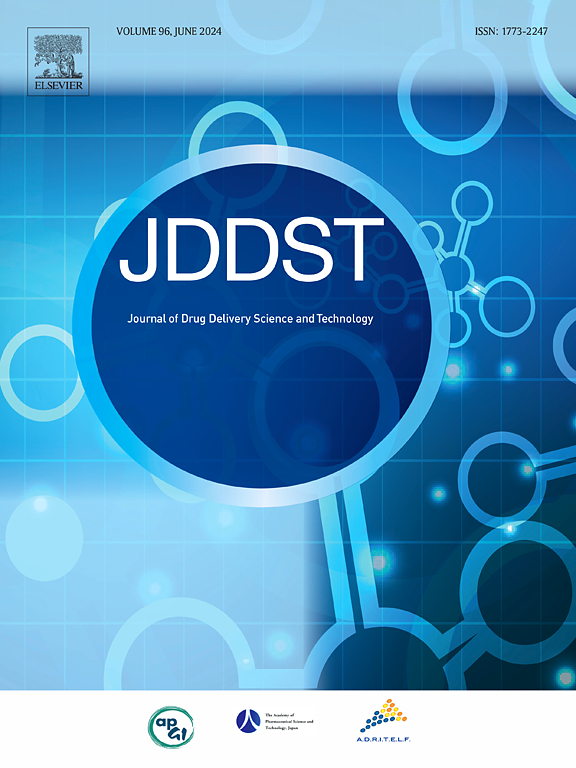Linagliptin-loaded bilosomes for oral administration: Formulation, optimization by Box-Behnken design, in-vitro, and in-vivo assessment
IF 4.5
3区 医学
Q1 PHARMACOLOGY & PHARMACY
Journal of Drug Delivery Science and Technology
Pub Date : 2025-04-03
DOI:10.1016/j.jddst.2025.106879
引用次数: 0
Abstract
Linagliptin (LGN), BCS class III drug, is used to treat type 2 diabetes mellitus. Despite its high aqueous solubility, LGN show oral bioavailability of only 30 %, due to poor permeability, pre-systemic metabolism, and P-gp efflux. Therefore, aim of this study was to develop LGN-loaded bilosomes (LGN-BIL) to improve oral bioavailability of LGN. Box-Behnken design was used to optimize the composition of LGN-BIL prepared by solvent evaporation method. The prepared LGN-BIL were characterized for vesicle size, zeta potential, entrapment efficiency (%EE), FTIR, TEM, DSC, PXRD, ex vivo drug permeation using everted sac model and in vivo pharmacokinetic study. The prepared spherical LGN-BIL had vesicle size of 138.0 ± 2.5 nm with %EE of 84.55 ± 3.5 %. FTIR studies demonstrated formation of amide bond between LGN and sodium deoxycholate. Moreover, apparent permeability coefficient (Papp) of LGN-BIL (9.82 × 10−7 cm/min) was higher by 1.5 fold when compared to LGN dispersion (6.34 × 10−7 cm/min). The Cmax and AUC0–48 for LGN dispersion were 0.135 ± 0.02 μg/ml and 1.889 ± 0.224 μg h/mL while that for LGN-BIL were 0.554 ± 0.06 μg/mL and 9.711 ± 0.125 μg h/mL, respectively. Thus pharmacokinetic study showed 4 fold increase in Cmax and 5 fold increase in AUC0–48 of LGN when formulated into bilosomes which could be attributed to P-gp inhibition, bypassing first pass metabolism and absorption of BIL through M-cells payers’ patches and nanosize. The prepared LGN-BIL could be a prospective drug delivery vesicles for LGN circumventing the drawback of poor oral bioavailability.

求助全文
约1分钟内获得全文
求助全文
来源期刊
CiteScore
8.00
自引率
8.00%
发文量
879
审稿时长
94 days
期刊介绍:
The Journal of Drug Delivery Science and Technology is an international journal devoted to drug delivery and pharmaceutical technology. The journal covers all innovative aspects of all pharmaceutical dosage forms and the most advanced research on controlled release, bioavailability and drug absorption, nanomedicines, gene delivery, tissue engineering, etc. Hot topics, related to manufacturing processes and quality control, are also welcomed.

 求助内容:
求助内容: 应助结果提醒方式:
应助结果提醒方式:


